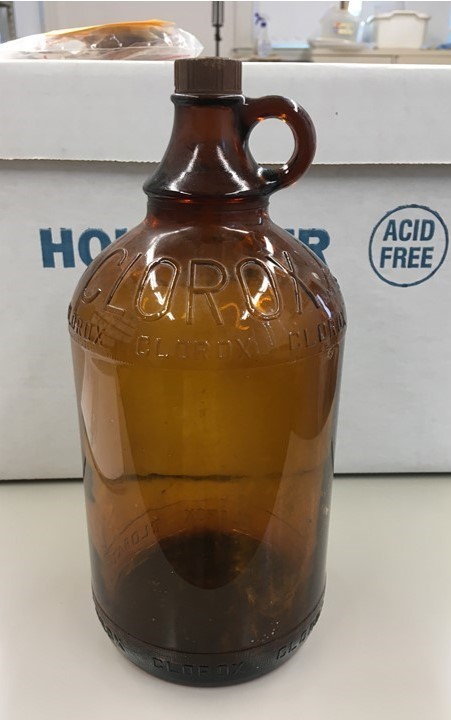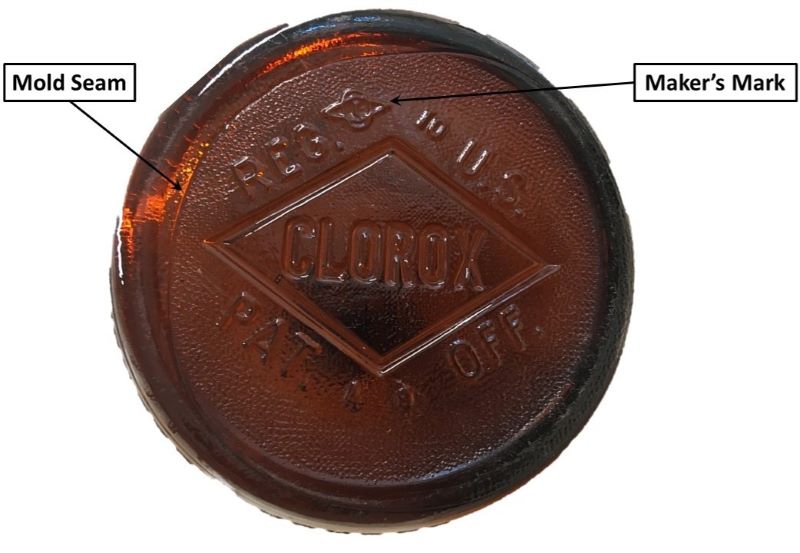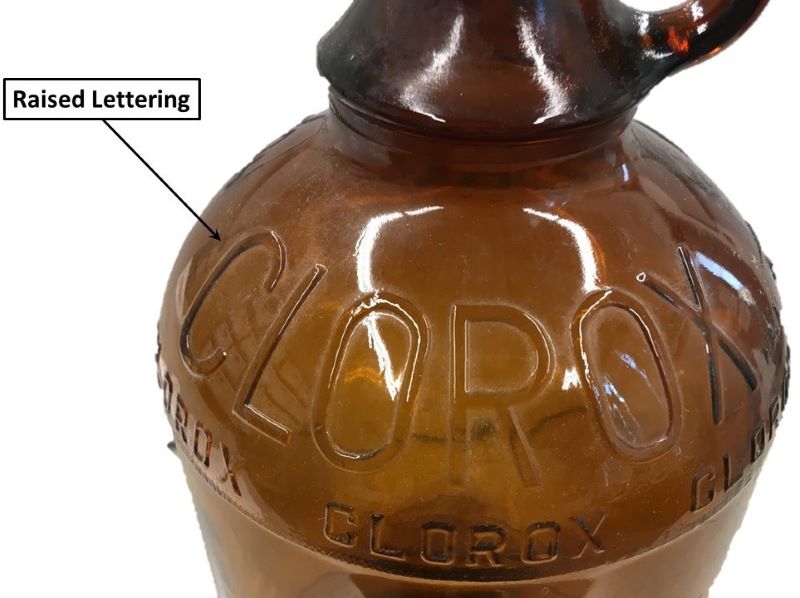
As everyone noticed, the COVID-19 pandemic caused major supply chain issues and certain items all but disappeared from grocery story shelves. A small number of goods are still difficult to find, including, it seems, anything with the word “Clorox.” However, after searching far and wide, we found a gallon in our collections. Only problem, it is at least 60 years old and the bottle is empty.
Although the Archaeology and Collections Branch regularly works on sites that are thousands of years old that contain evidence of Fairfax County’s earliest Native American inhabitants, other sites are considerably more recent. If they meet certain criteria, sites as recent as 50 years old can qualify as historic. Artifacts like this Clorox bottle provide archaeologists with an excellent tool to date a site very accurately, and the Society for Historical Archaeology and Bureau of Land Management collaborate to manage an excellent guide for bottle identification and dating.
Among the first things we look for are “mold seams.” If there is a mold seam on the base that is off center and comes up to the edge where the base begins to turn, it is a tell-tale sign that the bottle was made with a fully automatic machine. The first fully automatic bottle making machine was invented in 1903. So, the bottle must date later than that. In addition, this bottle contains a “Maker’s Mark” signifying the company that made it. In this case, the mark consists of an “I” surrounded by an oval atop a diamond shape. The Owens-Illinois Glass Company used this mark from 1929 into the 1950s.

For an even more precise date, we take a detailed look at style of the bottle, the shape, the lettering, any distinguishing marks or warnings, etc. In the case of this bottle, we benefit from the Clorox Company sharing information to collectors about their bottles. This bottle possesses a screw top cap and the lettering of “Clorox” is fully raised. According to Clorox, these characteristics indicate production between 1940 and 1942.

Thanks to observant eyes and readily available resources, archaeologists determined a two-year window for when this bottle rolled off the assembly line. Unfortunately for us, however, the contents are long gone. As a result, we will have to find other products to disinfect surfaces and splotch up our dyed fabrics.

